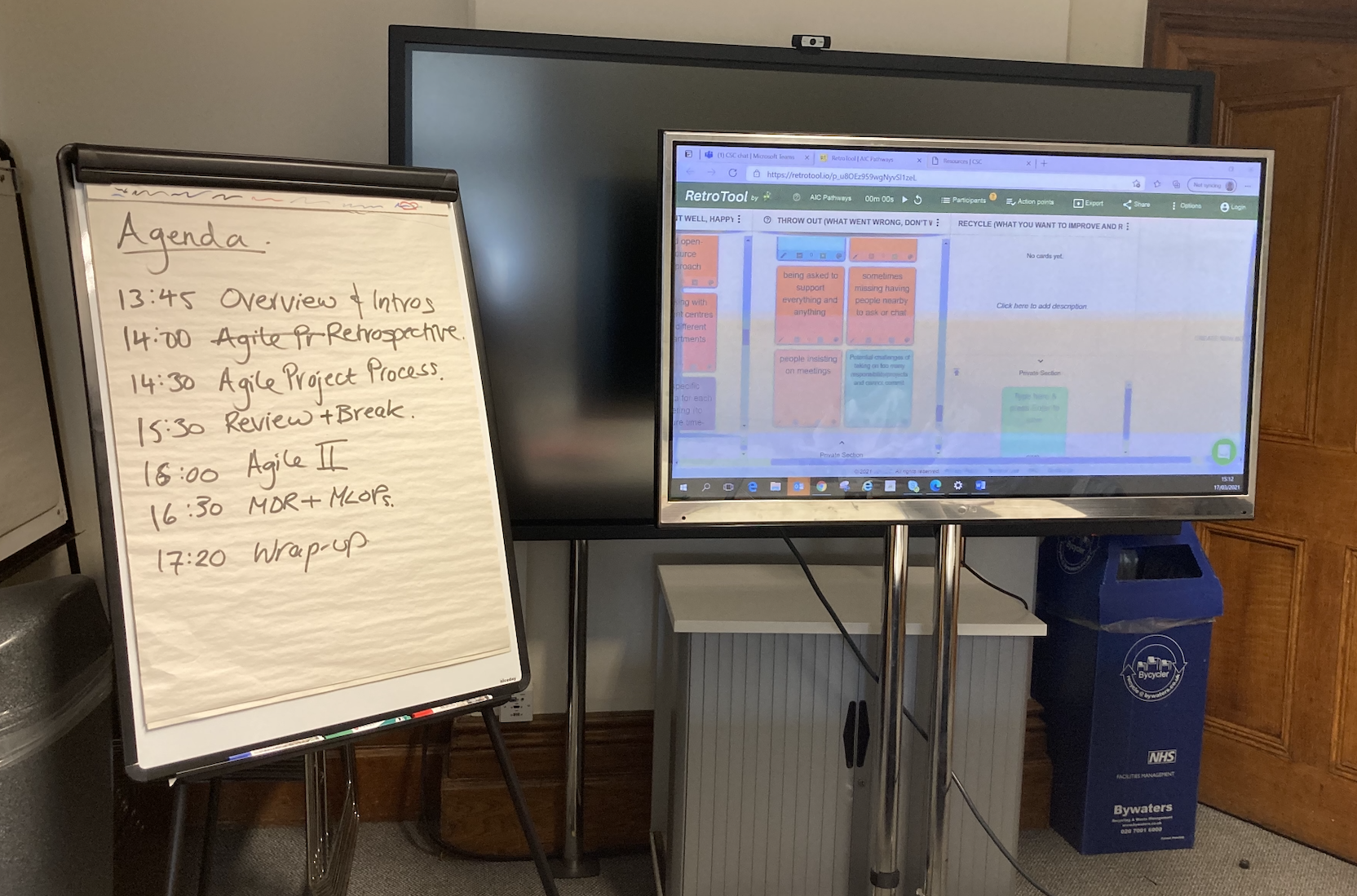
Lucy Funnell
AI Project Manager

Pathway to integrating AI into NHS practice
17 March 2021
Project Process Mapping
There is no set method or instruction manual for the implementation of AI into healthcare, although several guidelines and standards of practice documents are freely accessible to guide NHS Trust with this process. In this workshop we planned to develop a streamlined process for the development and deployment of AI technologies. After sharing first draft attempts of the process mapping of projects we came together to build on this template and expand on our current practice.

The Initial scoping phase.
It became clear that before any machine learning algorithms can be built there are some key details that need refining first. It would be simple to think of these as the aims, objectives and outcome measures of the project but success of such implementation will also need to hone in on the finer and complex details of each project. For example, how will this new technology change patient pathways and wider clinical teams’ delivery of care? What would the required impact on patients or hospital operations be and does this corelate to what would be categorised as significant change/ impact, if it is deployed into clinical practice longer term? Is there any work that is already out there regarding this technology or similar technologies? With just these three questions in mind, has any retrospective health economic analysis been completed looking into the wider gain of the implementation of the new technology compared to current clinical care pathways?
The outcome of this initial scoping would be to define the intended output of the project: a) an evaluation of a current AI technology, b) to develop and build our own in-house technology, c) or to co-develop a solution with external collaborators
A Review of the Current Landscape
After having identified an unmet need in the scoping phase, you should carry out a landscape review to find technologies that are available on the market, and their respective evidence bases. When reviewing available AI tools, it is important to understand what data sets they have been trained on and if it is reflective of our clinical practice? We then identified the resources required, not only in terms of people but also if other software and systems are required to generate the data sets, the smooth process of implementation, as well as the impact on funding and project time frames.
This step alone needs refining, the idea of producing a ‘Collaboration Pack’ which would house all this information, could be a starting point for us to improve our process. Not only would this Collaboration Pack act as submission of ideas to the CSC team, but it will allow the transfer of the information included on to other documents as we move through the process.
The next step is to refine the processes of in-house development projects. These projects will require us to deal with:
- Data storage and security
- Enriching the data and data clean up processes
- Model development, testing, and validation
- Documentation
There is now a mass of virtual sticky notes applied to this section of the pathway, the decision is made to pause, to step back and review the work completed today.
As we left GSTT, with Big Ben hidden behind its curtain of scaffolding, thoughts about how this AI can improve patient outcomes as well as reducing staff burden and costs fueled our passion to continue this journey. Unlike the unveiling of the improvements to Big Ben, we aim to share and showcase each improvement and progression made with our stakeholders every step of the way.